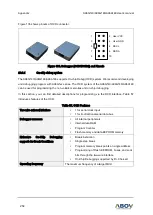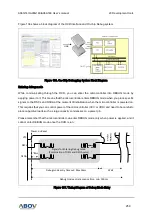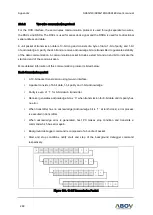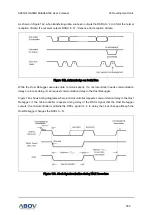
Appendix
A96G140/A96G148/A96A148 User’s manual
252
Features of each series are compared in Table 51.
Table 51. Feature Comparison Chart By Series and Core
96 Series
97 Series
94 Series
CPU Core
M8051
M8051
CM8051
Cycle Compatible with MCS51 1/6
1/6
No
OCD Function
OCD 1
OCD 2
OCD 2
Program BUS
8-bit
Data Bus
8-bit IRAM/ XRAM separated
8-bit single SRAM
EA Auto Clear
NOTE1
Yes
Yes
Yes
EA=0, Idle/ Stope Mode Wake
up
Yes
Yes
Yes
Interrupt Priority
NOTE2
6 group x 4 level
Interrupt x 4 level
Interrupt x 2 level
Nested Interrupt Priority
4 level
4 level
Interrupt x 2 level
(max. 4 times)
SFR BUS (read/ write)
Two ports
Two ports
Single port
Stack Extension
X
O
O
Register
SRAM
Register Bank
4
CPU/ Flash Clock Ratio
x 1
Pipeline
No
No
2-stage
(IF + ID/ EX)
DHRY Stone Score (I8051:
1.00)
6.0
6.0
8.4
Average Instruction Set Exe.
Cycle Compare with i8051
x 6.0
x 6.0
x 6.4
Power Consumption/ DHRY
(@synthesis)
52.27uA/ MHz
52.27uA/ MHz
30.19 uA/ MHz
NOTES
:
1.
EA means that All Interrupt Enable bit or Disable bit (Standard 8051).
2.
Group: When a programmer selects a specific interrupt (e.g. Interrupt1),
Whole interrupts: 0, 6, 12, and 18 have higher priorities.
3.
The A96G140/A96G148/A96A148 has the 96 series core and OCD 1 interface.
4.
The A96G140/A96G148/A96A148 can be operated with the OCD II dongle too, because the OCD II
dongle includes all functions of the OCD1.
ABOV
’
s 8-bit microcontroller maintains binary compatibility with 8051 cores; however, the cores and
series have differences in performances, core functionalities, and debug interfaces.
You can see the differences between each series in the following sections.
















































